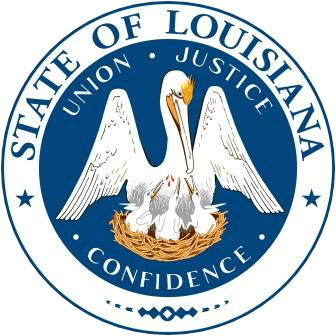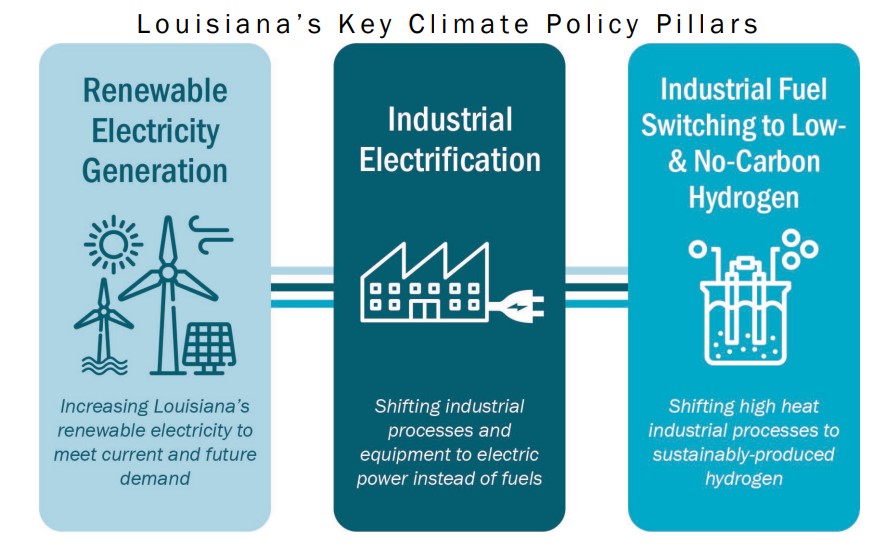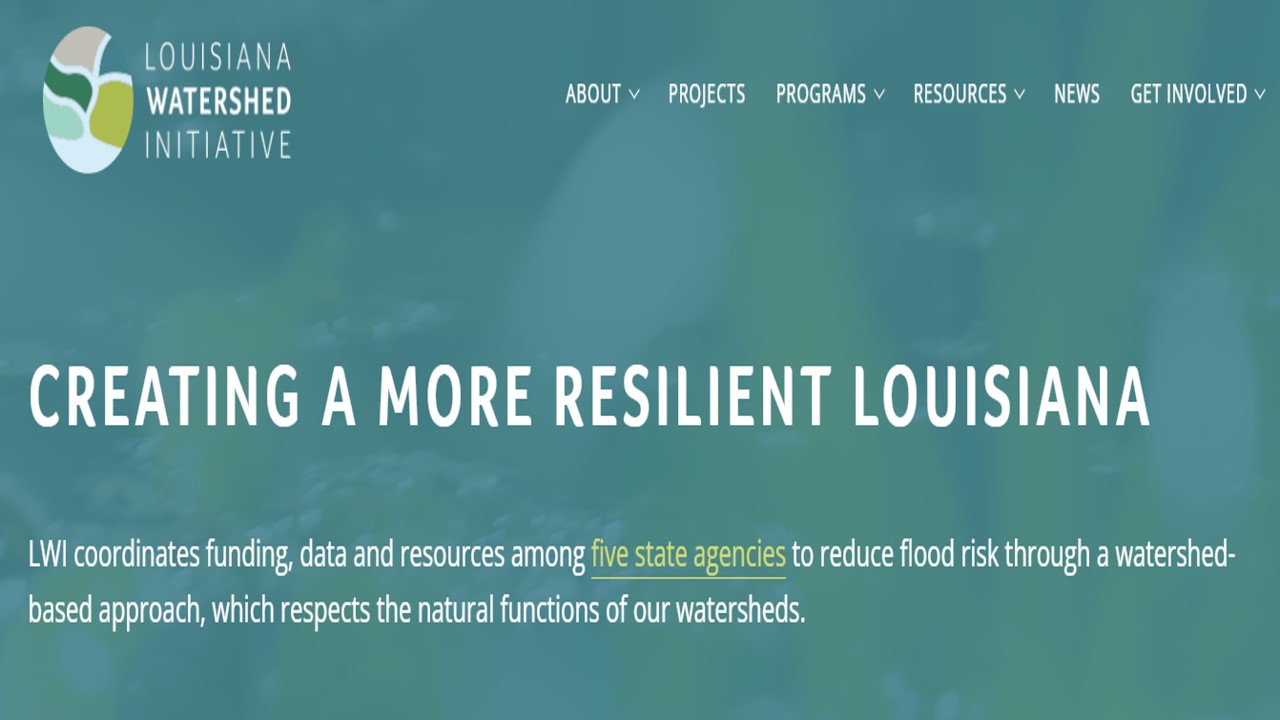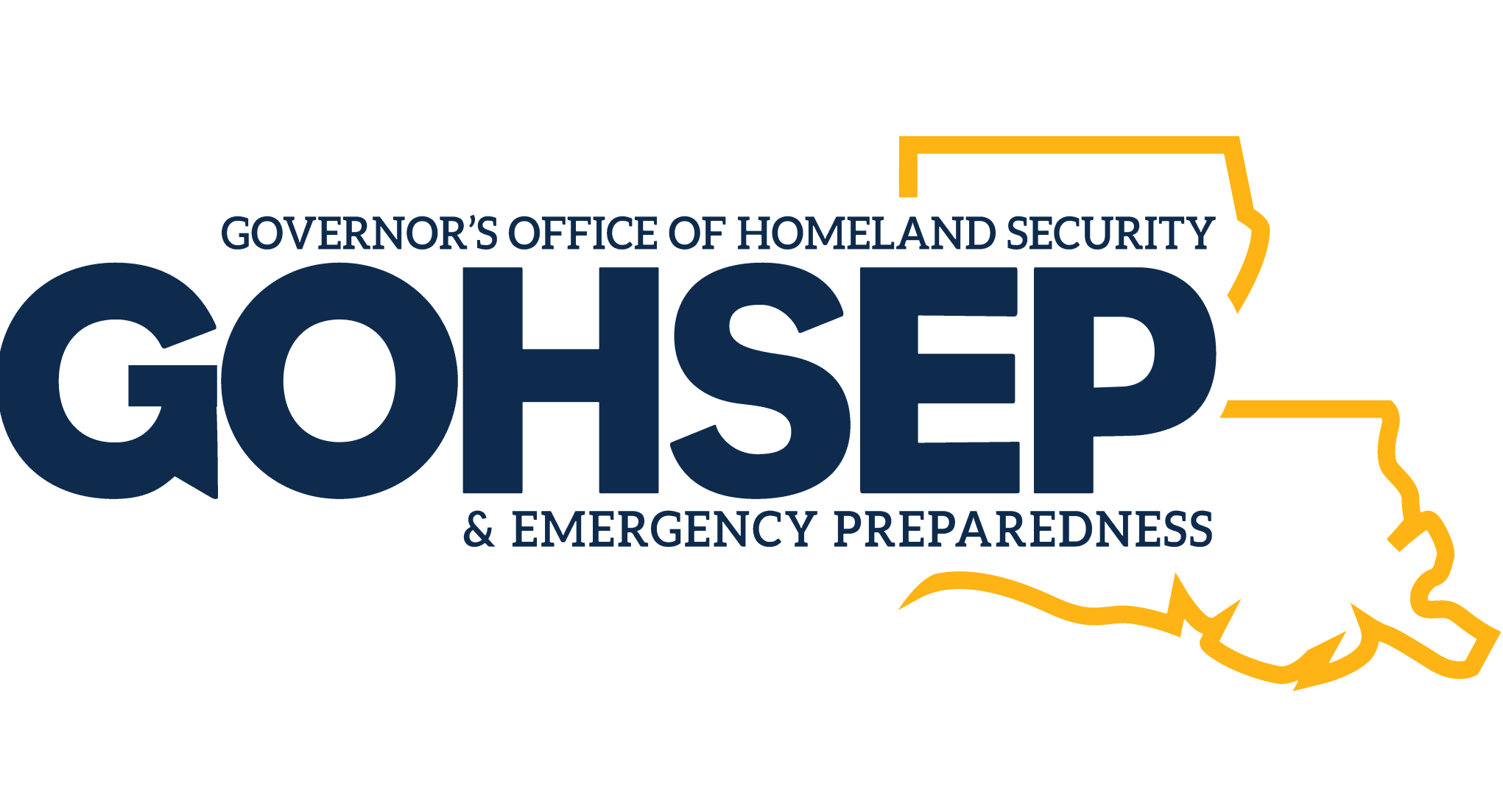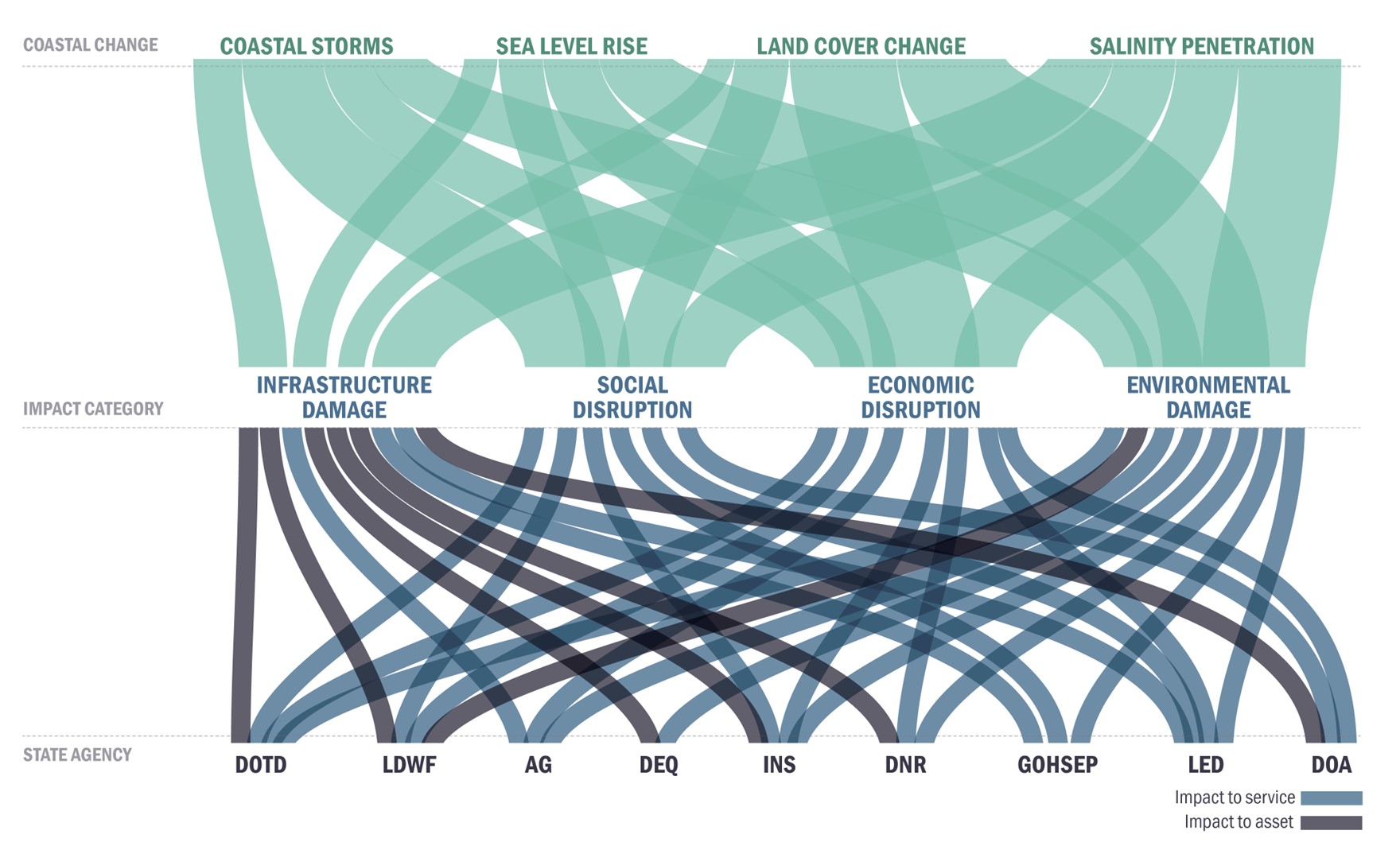
Introduction
Established through Act 315 of the 2023 Regular Legislative Session, House Bill 526 signed into law the existence of the Chief Resilience Officer within the Office of the Governor. Per Act No. 315, resilience shall mean a capability to anticipate, prepare for, respond to, and recover from significant multi-hazard threats with minimal damage to social well-being, the economy, infrastructure, and the environment.
The goal of the Chief Resilience Officer, the Interagency Team, and the Task Force is to unify, amplify, and broaden the state’s capacity to adapt to its changing environment, reduce the vulnerability of the state’s people and systems, and seize opportunities for residents, communities, and institutions to thrive despite disruptions and threats from extreme weather and the impacts of climate change.
To achieve this goal, the objectives are:
- To increase the wellbeing and the opportunity to thrive for all of Louisiana's people. This includes making them safer during and immediately following a weather event, but also demands specific attention to activities that can maintain or improve their quality of life in the face of natural hazards and climate change.
- To implement policies that lead to the reduction in economic losses resulting from natural hazards and climate change and support the evolution of the state's economy so that opportunities to meet the demands of the future are available to all and help to support the economic resilience of families, communities, and systems across Louisiana.
- To make government more efficient and effective so that we can avoid the opportunity cost of disaster response and recovery—by being better stewards of public resources, better delivering services despite weather conditions, becoming more coordinated so that programs and policies are complementary and consistent, and by allowing the time and resources to focus on improving
Louisiana rather than on disaster recovery.
Resilience Framework
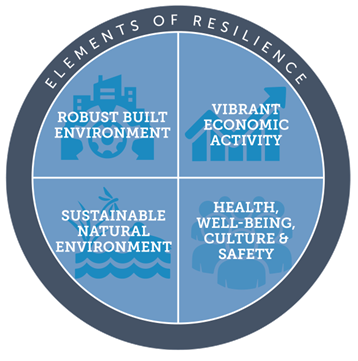
Building resilience in Louisiana is fundamentally about enhancing our ability to adapt to the wide-ranging environmental challenges facing our communities today and in the future. This is a multifaceted effort that necessarily involves forward-thinking initiatives focusing on our built environment (infrastructure, housing, etc.), our economy and workforce, the natural environment, and promoting and preserving health, opportunity, and culture for communities. By addressing resilience from multiple angles, roles and responsibilities emerge for different types of actors and agencies across all levels of government and beyond.
This approach will be applied to policy questions, strategies, and cross-agency initiatives that focus on adapting to future impacts, challenges that are slow moving, those that are not currently captured by a single agency, and those that require or benefit from collaboration across agencies or levels of government.
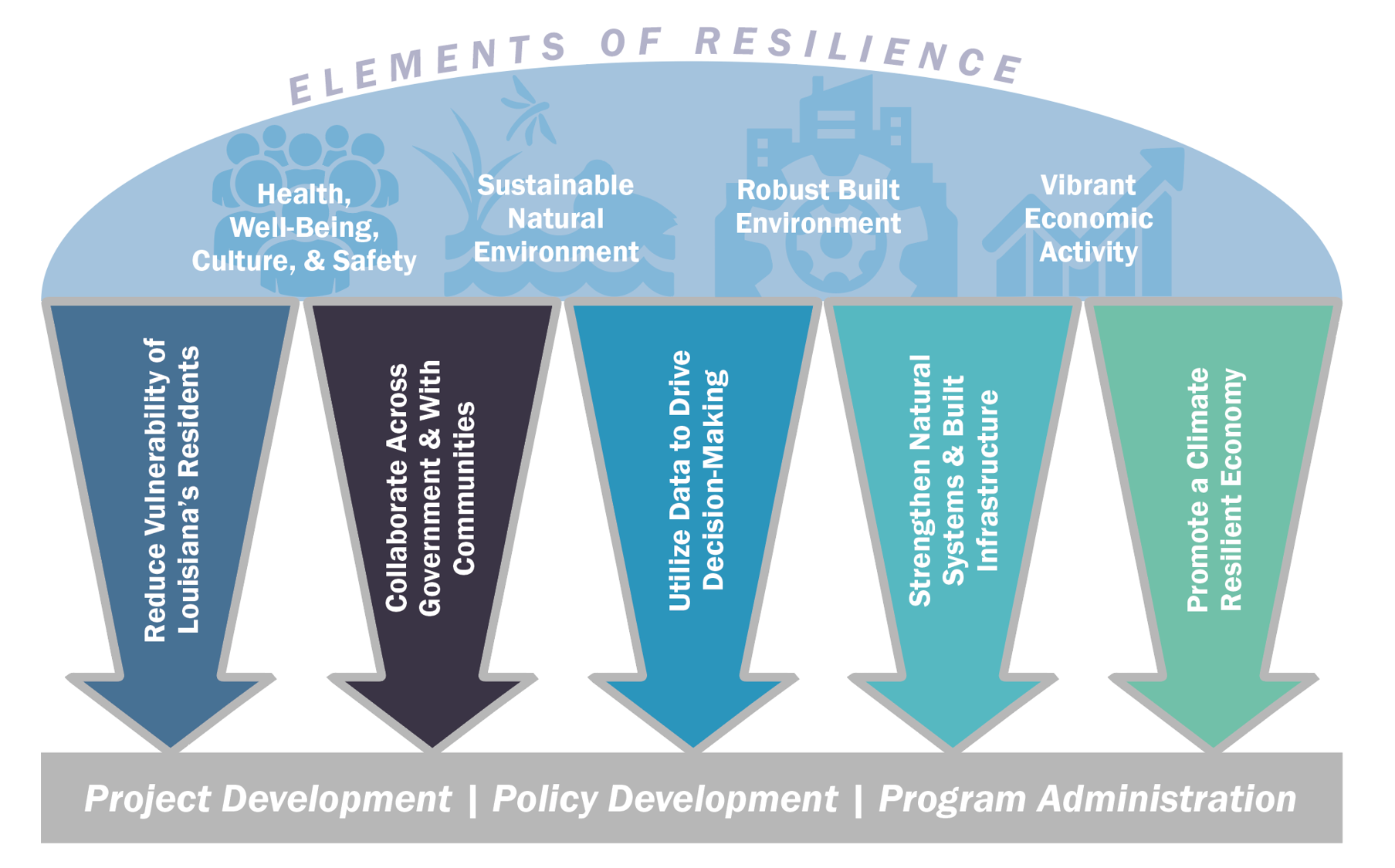
To learn more about each pillar, please read the Statewide Resilience Annual Report
Resilience Structure in Louisiana
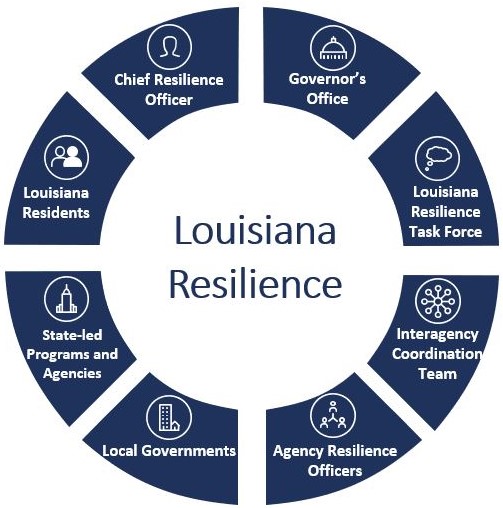
Louisiana is adopting a hub-and-spoke structure to achieve government-wide adaptation that enhances each entity’s adaptation potential as well as the capacity to address issues holistically. This structure places Resilience Officers in each agency all connected to the Chief Resilience Officer (CRO) in the Governor’s Office. The structure trusts that agencies know their programs, constituents, and stakeholders and that the best way to turn everyday programs and budgets into resilient programs and funding is by empowering actors within each agency.
The CRO will convene an Interagency Resilience Coordination Team made up of the resilience officers to maintain communication and alignment and oversee the development of the statewide resilience report.
The Louisiana Resilience Task Force, made up of Principles from across government and the Louisiana Municipal Association, the Police Jury Association, the Board of Regents, and the Public Service Commission will also meet to provide strategic direction to the state’s resilience efforts and make recommendations to the CRO.
The Chief Resilience Officer, the Interagency Team, and the Task Force operate in public view and the resilience officers at each agency serve as points of contact for the public and each agency as we enhance communication and connection.
Background
In 2020, the Governor joined ten other states by authoring an executive order naming a Chief Resilience Officer to advance a cross-agency, holistic approach to the challenges and opportunities associated with the impacts of environmental hazards in Louisiana’s coastal area. During the 2023 Regular Legislative Session, House Bill 526 was adopted and signed into law as Act 315 which built on that work by establishing the position of Chief Resilience Officer within the Office of the Governor by statute and with the mandate to take this cross-government approach to resilience statewide and in response to all of the environmental hazards the state and its communities are facing. Act 315 defines resilience as something inherently multi-dimensional when looked at in total and also made up of pieces that can be used to organize conversations or collaborations among smaller groups of stakeholders who may share a common language or a shared collection of missions.
State Agency Actions
In addition to statewide priorities and updates, Act 315 also calls for individual state agencies to report out on their progress building resilience. Beginning in 2024, resilience officers will help lead their agency through the development of strategic resilience plans that grapple with the essential question,
“How does the changing climate affect the programs, assets, and services offered or owned by your department today and in the future?”
Armed with the knowledge of where the impacts are most critical, adaptation options can then be pursued either individually or together with others.
Operating under Executive Order 2020-19 on Coastal Resilience, the Adaptive Governance Initiative worked with state agencies to conduct vulnerability assessments, plan adaptation options, and report on priorities related to the impacts of coastal change that can be replicated statewide and across more hazards.
Additionally, the 2024 Resilience Priority Issues are:
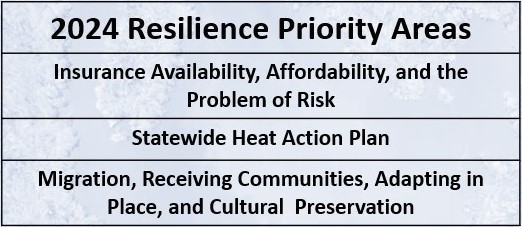
Final Statewide Resilience Report is Live
Please see the final 2023 Resilience Annual Report here.
